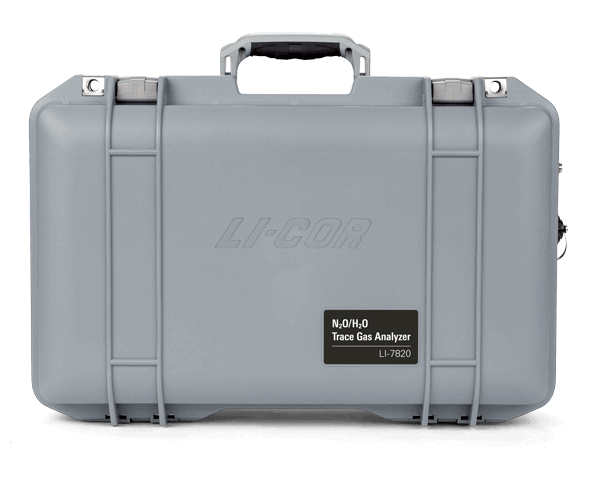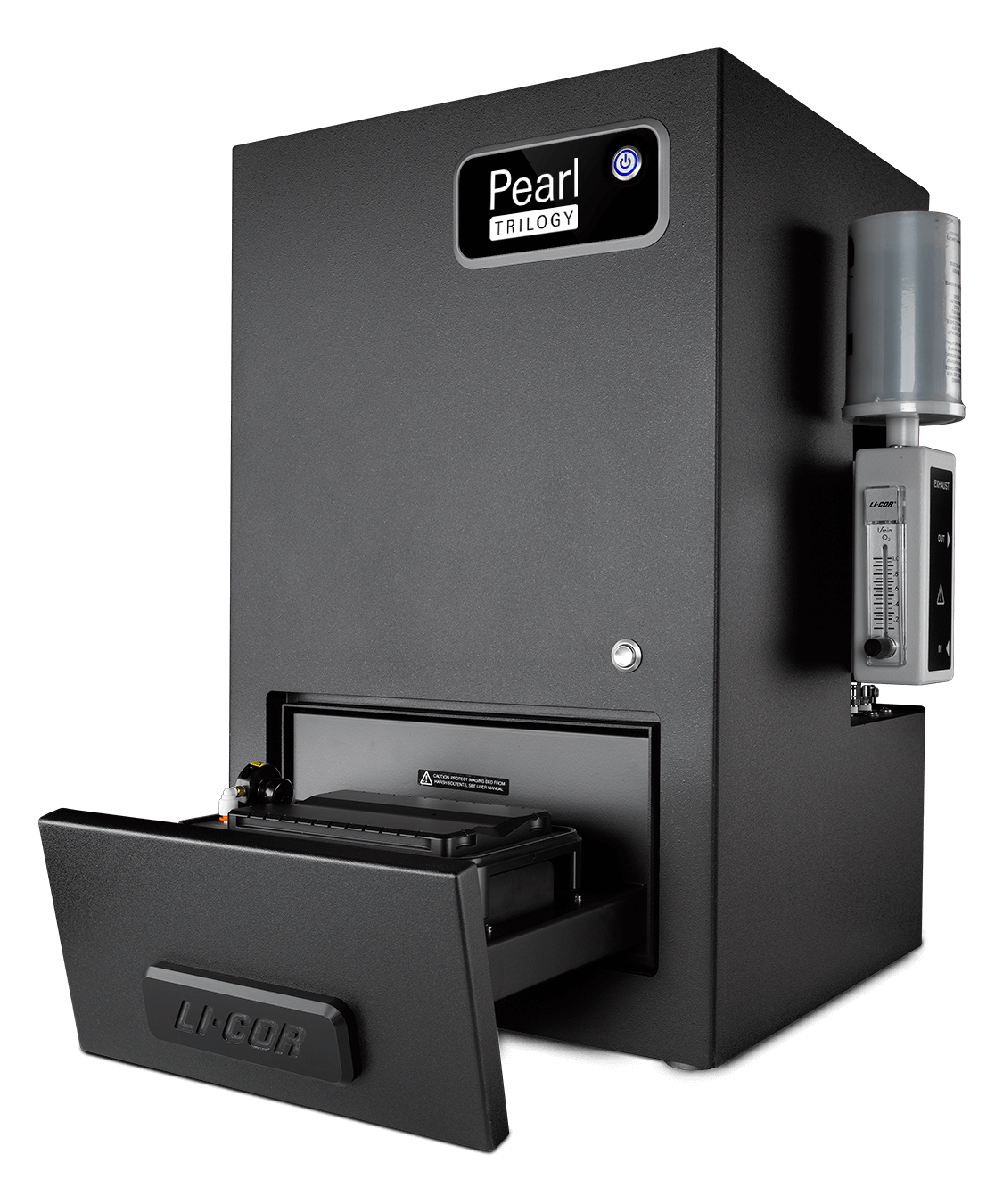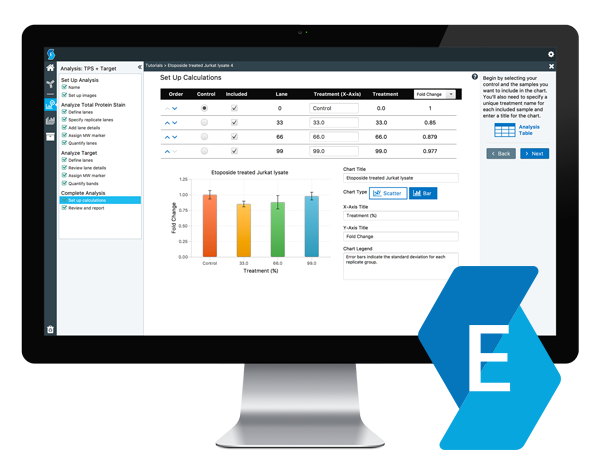LI-COR is a leading innovator in developing high quality instrument systems that are used for plant research, gas analysis, drug discovery, protein research, and small animal imaging. Our instruments, analysis software, and reagents are used in more than one hundred countries—and in studies ranging from global climate change to cancer research.
LI-COR develops Environmental and Biotechnology products that remain at the forefront of modern research technology. Both lines continue to diversify as our scientists and engineers develop the cutting-edge products needed by researchers in today’s scientific world. Because customers are committed to pursuing challenging research, our mission is to facilitate this by providing high-quality solutions and personalized customer support.
LI-COR History
LI-COR Biosciences has been “Impacting Lives through Science” since 1971. Building upon the strengths of our personnel, we have grown to include more than 330 employees at its headquarters in Lincoln, NE, USA, and subsidiaries in Bad Homburg, Germany, and Cambridge, UK. LI-COR is a privately held company and is ISO 9001:2015 certified.
Awards received include the Lincoln Chamber of Commerce Manufacturer of the Year Award, R&D 100 Award, Quantum Workplace Employee Voice Award for Exceptional Employee Engagement, Nebraska Exporter of Year Award, Frost and Sullivan New Product Award, Rotary Club International’s Salute to Business Award, Nebraska Business Development Council Innovation Business of the Year Award, and the Governor’s Bioscience Award. In 2021, co-founders Bill and Elaine Biggs were inducted into the Nebraska Business Hall of Fame.
In 2021, with the retirement of then LI-COR Chief Executive Greg Biggs, LI-COR was acquired by Battery Ventures, a global, technology-focused investment firm. The duties of the Chief Executive passed to Tom Reslewic, who will lead LI-COR into its next chapter. Tom and LI-COR look forward to continuing the company’s legacy of innovation and impacting lives through science.
Early History
In 1967, Bill graduated from the University of Nebraska-Lincoln (UNL) with a bachelor’s degree in engineering then pursued a master’s degree. At the time, the Rockefeller Foundation was funding various programs to develop grain sorghum as a food supplement in underdeveloped countries, so a grant was made on these programs’ behalf to UNL. This funding supported research initiatives for a number of scientists—including Bill—for five years and allowed UNL to sponsor a symposium at the university’s Kellogg Center.
Bill’s role in the sorghum project was to develop instrumentation related to plant photosynthesis in collaboration with other UNL scientists. One of the instruments Bill designed—an accurate, inexpensive sensor and meter for measuring photosynthetically active radiation (PAR)—was highlighted in the Journal of Ecology. Shortly after the symposium ended, his group began to receive instrumentation requests from scientists who had attended the symposium. This led to a part-time business in 1968 and to a full-time operation as Lambda Instruments Corporation in 1971. The company’s name was then formally changed to LI-COR, Inc. seven years later.
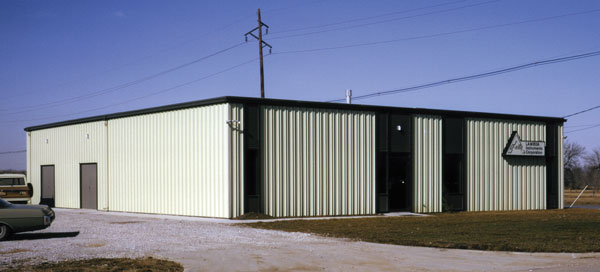
As LI-COR grew, the Environmental product line’s staff continued developing instruments to supplement the existing line of light sensors, porometers, spectroradiometers, and photosynthesis systems. The rapid growth in biotechnology research inspired LI-COR's early forays into DNA and gene sequencing technology. This eventually led to the development of a Biotechnology product line.
While the Environmental and Biotechnology product lines remain distinct, they share one common element: they measure biological parameters based on the interaction between electromagnetic radiation and physical matter.

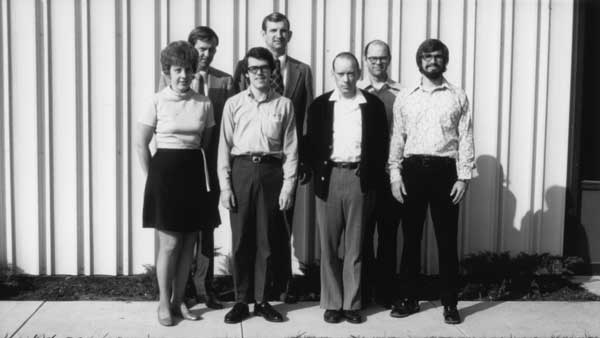
LI-COR Environmental
LI-COR Environmental is a global leader in the design, manufacturing, and marketing of high quality, innovative instrument systems for plant biology and environmental research. LI-COR has been in this field for 50 years, and our instruments are used worldwide in numerous environmental applications—including agronomy, ecology, plant physiology, plant pathology, carbon cycle studies, and climate change.
Light
Bill's master’s thesis focused on developing a light meter—much of which was later incorporated into the LI-185 Quantum/Radiometer/Photometer (right) that was marketed in 1971. At that time, light was measured primarily with foot candle meters; these meters were commonly used by photographers and measured light as the human eye perceives it (now measured with photometric sensors like the LI-210R Photometric Sensor).
However, this light measurement is not particularly useful for measuring light needed for plant growth; much of the light—particularly in the green spectrum—is reflected by plants and not used for photosynthesis. A group of researchers at the University of Wisconsin advocated to measure light in terms of photons, or the amount of light per unit of time on a unit surface area. Glass filters were used to tailor the sensor’s response to the desired quantum response (i.e., 400 to 700 nm), or the light spectrum range used by plants. This revolutionary concept ultimately led to the creation of the LI-190 Quantum Sensor in 1972 and is still sold today as the LI-190R.
LI-COR currently manufactures a complete line of terrestrial and underwater radiation sensors, as well as light meters and data loggers (i.e., the LI-250A Light Meter and LI-1500 Light Sensor Logger).
Leaf Area
In the early 1970s, LI-COR began developing what would become a series of portable and laboratory leaf area meters. The first of these—the LI-3000 Portable Area Meter—was released in 1974. The LI-3000 combined a readout console with a scanning head for portable, non-destructive leaf area measurements. Leaf area and length as well as average and maximum width were logged by the readout console as the scanning head was drawn over a leaf. The LI-3000 was unique in that it used pulsed LEDs for the light source and a photodiode array for 1 mm2 resolution. Additionally, the LI-3050 Transparent Belt Conveyor was designed to work with the LI-3000. Both are still sold today as the LI-3000C and LI-3050C.
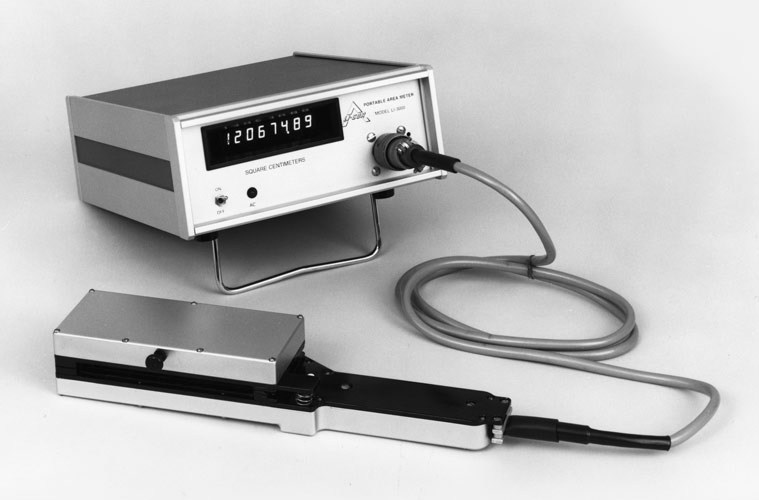
To add to the leaf area meter product line, LI-COR contemplated inventing a larger, laboratory grade area meter. In order to keep the instrument small enough to be practical, a camera lens and a series of mirrors are used to sense the object width. As a leaf travels under the fluorescent light source, its image is reflected by a system of three mirrors onto the scanning camera. Object width is sensed by the camera lens, and the length is provided by the current frequency as related to the rate of travel of the belt. Used in the first LI-3100 Area Meter in 1976, this system is still largely unchanged in the current LI-3100C.
In 1987, another non-destructive leaf area instrument, the LAI-2000 Plant Canopy Analyzer, was released. The LAI-2000 computed leaf area index (LAI) and other canopy structure attributes from radiation measurements made with a "fish-eye" optical sensor. Measurements made above and below the canopy are used to determine the interception of light by the canopy at 5 zenith angles. LAI is then computed with these data using a model of radiative transfer in plant canopies.
The popular LAI-2000 was updated in 2010 and released as the LAI-2200, incorporating wireless communication between the logging console and optical sensor(s). Released three years later, the current LAI-2200C added an integrated GPS module to determine solar position for light scattering corrections as well as mapping leaf area index to view on Google Earth.

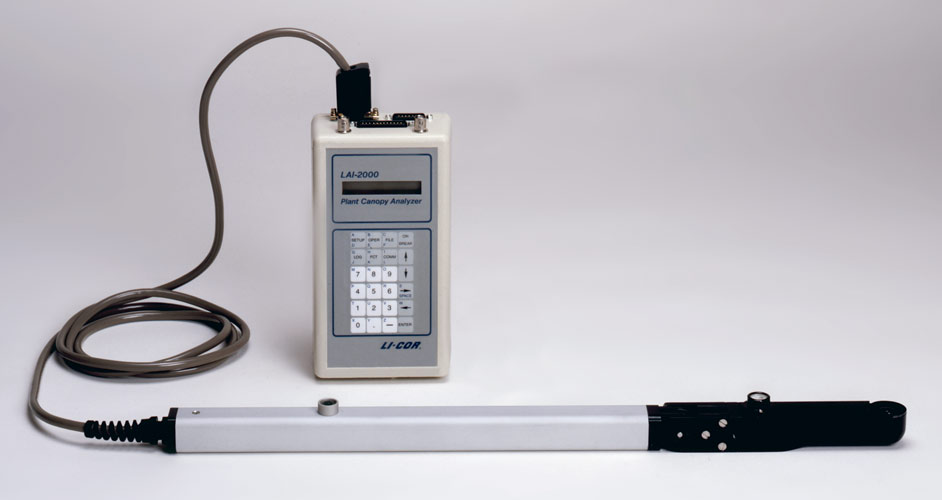
Photosynthesis
In the early 1980s, LI-COR developed a portable photosynthesis system. The prototype model, which resembled a bagpipe, was among the first portable photosynthesis systems ever built and led to the release of the LI-6000 Portable Photosynthesis System.
LI-COR scientists and engineers found innovative solutions to nearly all the technical challenges of building the instrument, but one problem remained: no company manufactured an infrared gas analyzer with the performance, reliability, and low cost required for a high-quality photosynthesis system. LI-COR began developing its own infrared gas analyzer that was used in the second-generation LI-6200 photosynthesis system.
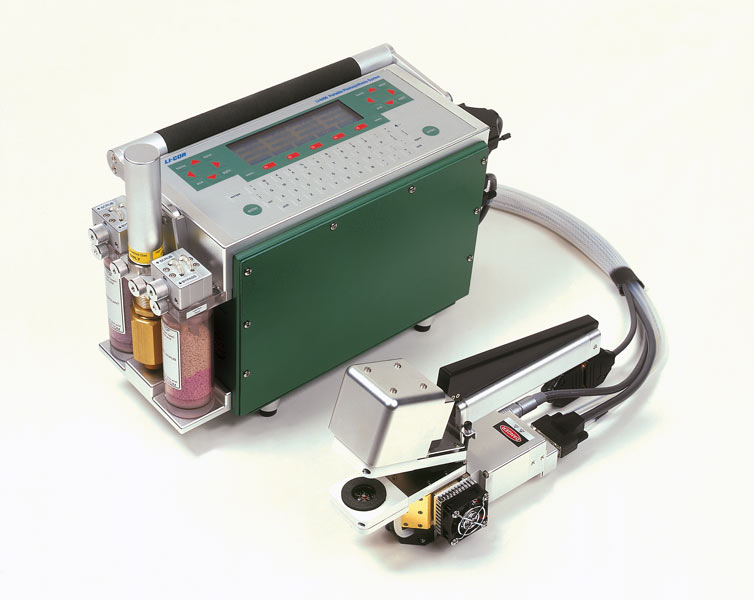
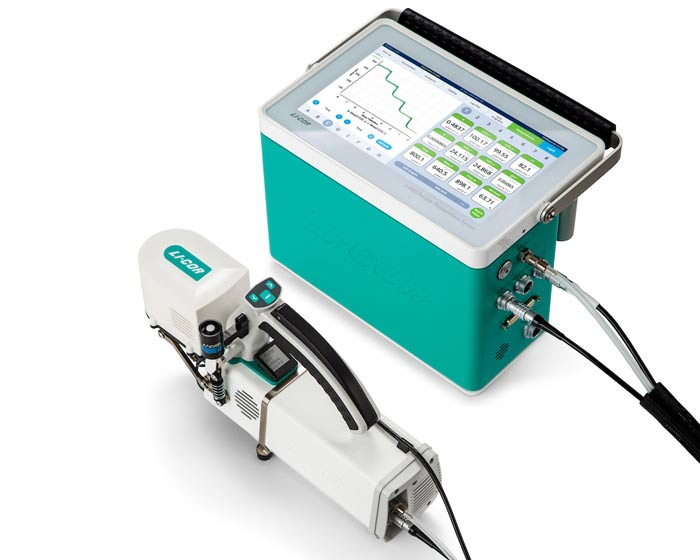
Building on the LI-6200’s success, LI-COR developed the innovative LI-6400 Portable Photosynthesis System. In addition to providing scientists with a robust and reliable instrument, the LI-6400 was developed to support many novel and custom accessories, enabling scientists to measure previously unattainable biological parameters. The LI-6400, later updated to the LI-6400XT, is the most cited photosynthesis system in published scientific journals.

In 2016, the innovative LI-6800 Portable Photosynthesis System was introduced. It delivers unprecedented capabilities for measuring gas exchange and fluorescence. Improved gas analyzer precision, light source uniformity, flow path design, environmental controls, and larger leaf areas—among other parameters—are coupled with a touch screen interface that provides real-time guidance. The LI-6800 sets a new global standard for gas exchange and fluorescence measurements in every aspect. A user experience built from the latest technological innovations—combined with integrated performance improvements—yield the most advanced system on the market.
To complement the LI-6800 and build upon the current plant physiology product line, LI-COR released the LI-600 Porometer/Fluorometer in 2020. The LI-600 is a compact, handheld device that takes stomatal conductance and chlorophyll a fluorescence measurements.

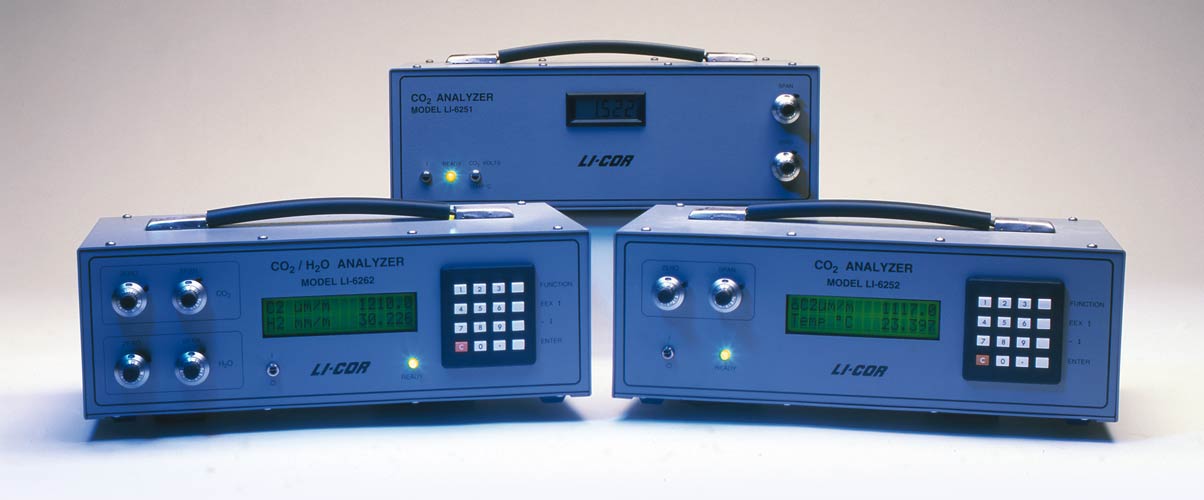
Gas Exchange & Analysis
LI-COR’s infrared gas analyzer delivered higher performance at a lower cost than any other CO2 analyzer in the late 1980s. After making a few minor modifications—such as adding a sensor housing and control panel—the company marketed the LI-6251, its first standalone CO2 analyzer. This was the first-generation instrument in LI-COR's standard-setting line of infrared gas analyzers.
LI-COR infrared gas analyzers have rapidly become the world standard in atmospheric, ecological, and oceanographic research. The innovative LI-7500 Open Path CO2/H2O Analyzer, introduced in 1999, was followed by the high precision LI-7000 Enclosed CO2/H2O Analyzer a year later. The LI-7500A, an updated version of the LI-7500, was launched in 2010.
That same year LI-COR released the LI-7200—a compact, enclosed CO2/H2O analyzer that combines the benefits of open and closed path gas analyzers. Its integrated system is designed to provide measurements in harsh weather conditions and environments with low power consumption. Both the LI-7500A and the LI-7200 were updated in 2016 as the LI-7200RS and the LI-7500R, respectively; the LI-7500R was updated again to the LI-7500DS.

Eddy Covariance Systems
Advancements in gas analysis carried LI-COR into eddy covariance research technology. The eddy covariance technique is a widely used, direct method for quantifying exchanges of gases (e.g., carbon dioxide, water vapor, and methane) and energy between the earth’s surface and the atmosphere. LI-COR sought to provide a complete solution for measuring flux; it coupled its infrared gas analyzers with additional biological and meteorological sensors to measure flux over various surfaces.
In 2009, LI-COR introduced the LI-7700 Open Path CH4 Analyzer, the world's first open path methane analyzer for eddy covariance studies. As instrumentation developed, so did various software options. EddyPro® Software, for instance, was part of the creation process of the LI-7500DS and LI-7200RS. It was designed to serve as an open-source, data processing software that computes gas and energy fluxes with the eddy covariance method. These changes were also implemented in the next available software, the SmartFlux® System. SmartFlux became responsible for running EddyPro on site to compute final flux results as data are logged, providing real-time data processing.
Six years after the LI-7700 was launched, FluxSuite™ Software was offered as a way to make eddy covariance sites accessible online, so researchers could view real-time eddy covariance site results and system status. To address the post-processing stage in eddy covariance research, LI-COR then established Tovi™ Software. Tovi provides researchers with tools such as easy data visualization, gap filling, footprint modeling, and flux partitioning. FluxSuite, EddyPro, SmartFlux, and Tovi are still currently available.
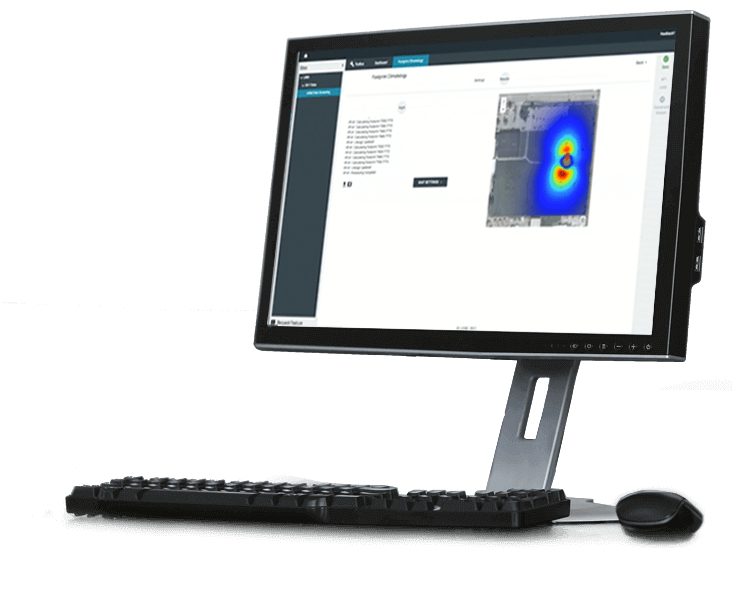
Soil Gas Flux
Extending itself into soil flux research, LI-COR developed the LI-8100 Automated Soil CO2 Flux System, which delivers highly accurate measurements of soil CO2 flux with minimal alteration of the natural soil microclimate. The system features chambers for making both short-term survey and long-term, unattended measurements. In 2010, LI-COR released the LI-8100A, an updated and Ethernet-ready version of its predecessor.
In response to the demand for multiple chamber connections into a single system, LI-COR produced the LI-8150 Multiplexer for the LI-8100A System that connected up to sixteen long-term chambers—such as the 8100-104 Long-Term Chamber and 8100-104C Clear Long-Term Chamber. The chambers’ patented design minimize disruption and record high-precision flux measurements, creating an integrated system for soil gas flux research. All three instruments were updated and released in 2020 as the LI-8250, 8200-104, and 8200-104C, respectively.
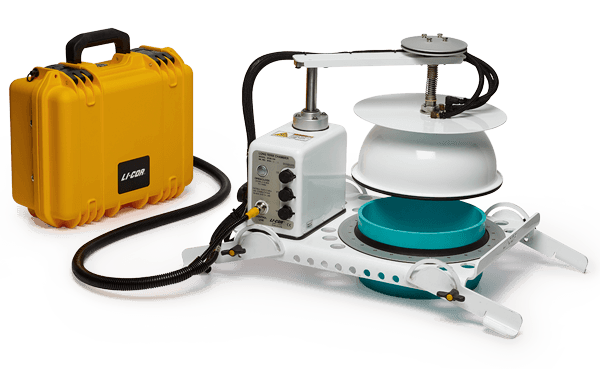
LI-COR continued to expand its product line for soil gas flux, integrating closed path gas analyzer technology into several trace gas analyzers. For example, the LI-7810 CH4/CO2/H2O Trace Gas Analyzer, the LI-7815 CO2/H2O Trace Gas Analyzer, and the LI-7820 N2O/H2O Trace Gas Analyzer are designed for both portable and laboratory-based measurements. To assist in managing these products’ data, SoilFluxPro® Software was released and is available as a post-processing tool for fine tuning and mapping soil gas flux results.
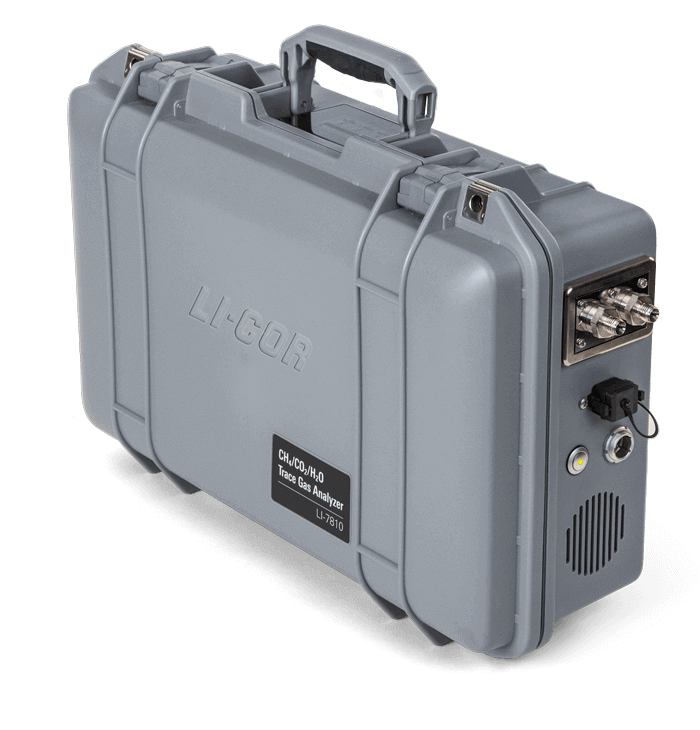
LI-COR Biotechnology
Throughout its history, LI-COR has created technology to address the growing needs of the scientific community. LI-COR Biotechnology offers complete solutions for quantitative protein research and small animal imaging. From innovative assays and imaging systems to analysis software and reagents, LI-COR helps researchers around the world answer difficult questions and improve human health.
Genomic Sequencing
After earlier developments with argon lasers, LI-COR created the Model 4000 Automated DNA Sequencer with near-infrared (NIR) laser technology, whose launch in 1992 immediately garnered international attention. This sequencer played a key role in sequencing the human genome with over a thousand base pair reads. A year later, the 4000L Long Read DNA Sequencing System set global standards for long read lengths and accuracy.
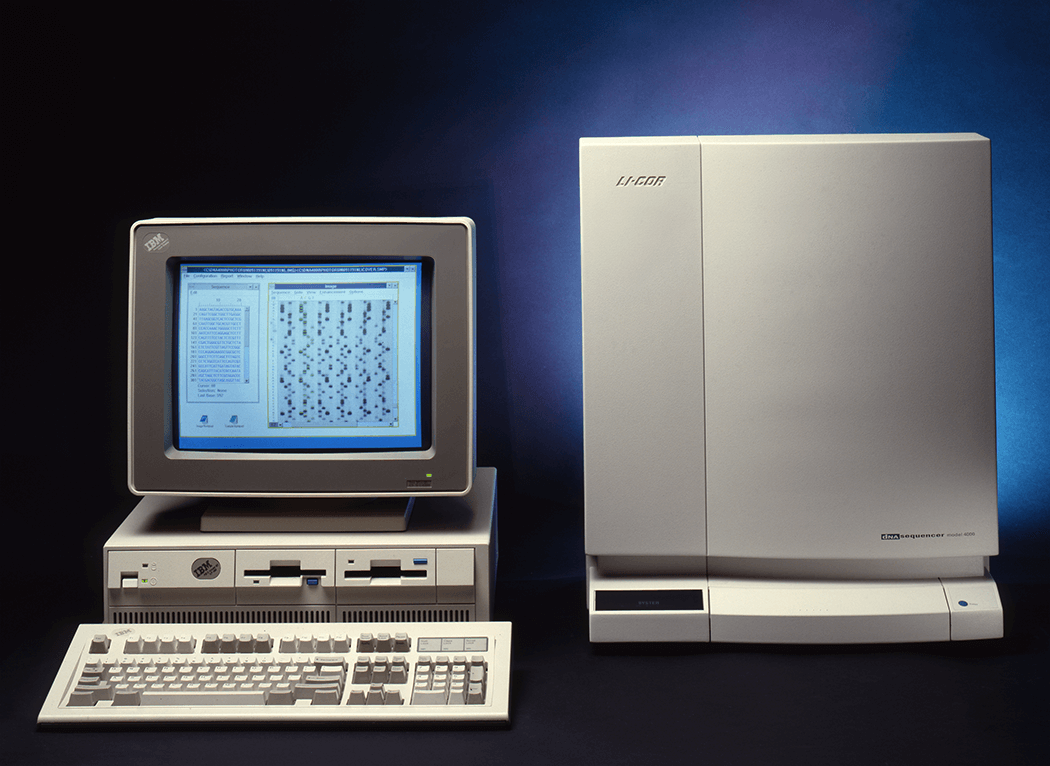
The Model 4300 DNA Analysis System was introduced in 2003. The Model 4300 System included comprehensive application packages for DNA sequencing, Microsatellite analysis, AFLP® analysis, reverse genetics (TILLING®), and SNP discovery (Ecotilling).
As the biotechnology line grew, LI-COR recognized the potential of infrared fluorescent dyes to improve the reliability, accuracy, and performance of DNA sequencing instruments. LI-COR soon began exploring new applications for infrared dye detection and found these same characteristics would also make NIR fluorescence an excellent platform for protein imaging.

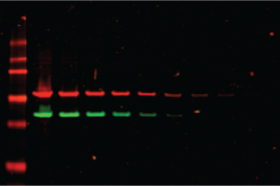
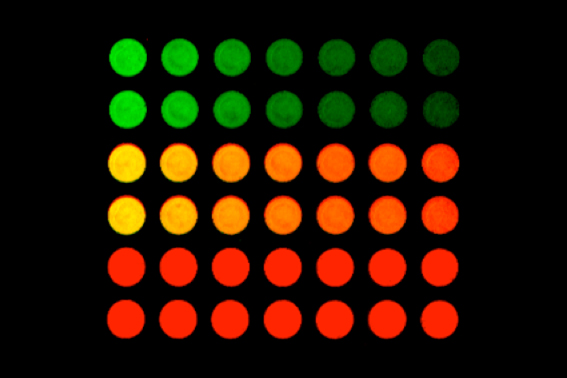
Proteomics
In 2001, LI-COR released the first imager in the Odyssey® Family—the Odyssey Classic Infrared Imaging System. The Odyssey Classic delivered superior, two-color fluorescent Western blots with clear, sharp bands in a fraction of the time and cost of chemiluminescence. It featured unprecedented, direct detection for a variety of applications—including protein and DNA gels and Western blots. Since then, the Odyssey name has become synonymous with quality and capability.

To continue to leverage the benefits of NIR fluorescence and to expand the capabilities of Odyssey Imagers, LI-COR invented the In-Cell Western™ Assay and developed a diverse line of reagents and consumables, including IRDye® Infrared Dyes and Secondary Antibodies.
The In-Cell Western Assay is a quantitative immunofluorescence assay used to quickly characterize cell signaling parameters. The assay has gained favor in the scientific community for its speed, accuracy, and reliability. LI-COR reagents and imaging systems have been involved in more than twenty clinical trials spanning brain, lung, and breast cancer studies. In 2020, IRDye 700DX was sold to Rakuten Medical, Inc., and will serve as a critical component of photoimmunotherapy for treatment of head and neck cancers.

To provide a complete solution for biotechnology research, LI-COR developed Image Studio™ Software. For many years, Image Studio served as an industry-leading Western blot analysis software with more than 120,000 downloads as of May 2021.
Small Animal Imaging
In 2008, LI-COR released the Pearl® Small Animal Imager for NIR fluorescent in vivo imaging. The Pearl was crucial for therapeutic companies to study disease onset and progression and to assess drug clearance, biodistribution, colocalization, and efficacy.
To support the growing capabilities of the Pearl, in 2010, LI-COR expanded its reagent family with BrightSite™ IRDye optical agents for in vivo imaging. Combining the Pearl Imager with BrightSite optical agents enabled researchers to track biological events and disease activity in living animals. This research is valuable in numerous areas of study—including apoptosis, angiogenesis, inflammation, bone growth, and the microbiome.
In 2015, the Pearl Trilogy added a third detection channel for researchers interested in bioluminescence detection.
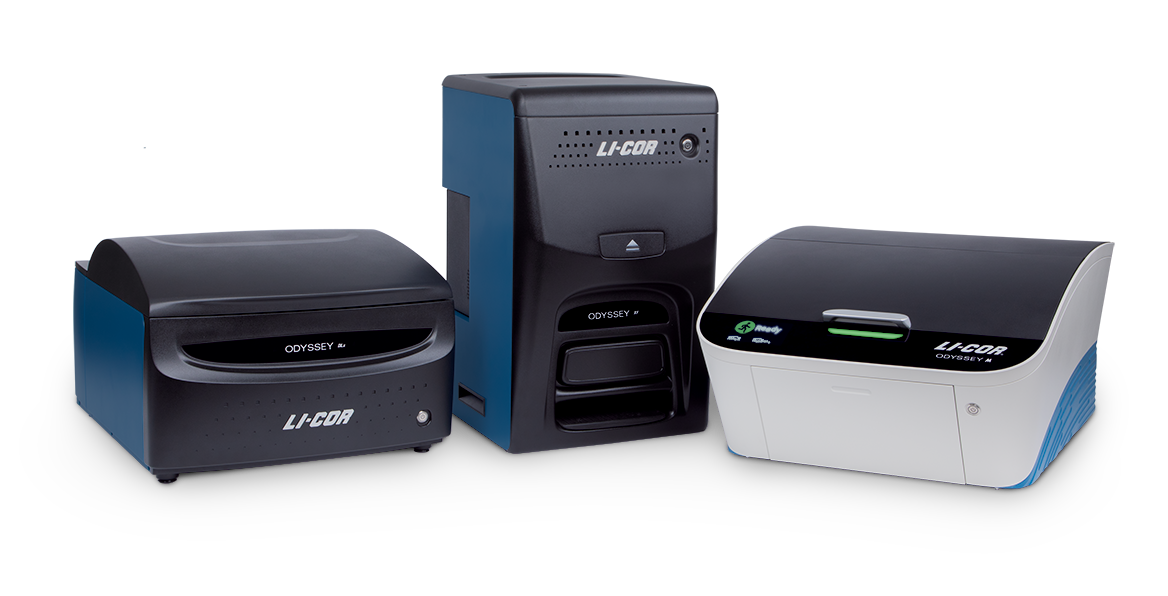
Today
LI-COR has expanded its biotechnology offerings to include a vast lineup of innovative imagers, software, and reagents. The C-DiGit® Blot Scanner, released in 2013, offers an affordable and accurate digital method of performing chemiluminescent Western blots that improves on traditional methods by collecting a single digital image using a wide dynamic range.
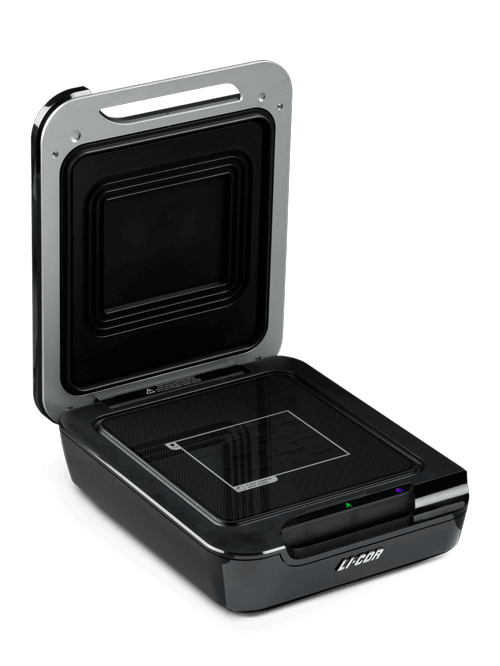
To align with publisher and industry best practices, LI-COR created Empiria Studio® Software in partnership with high-impact journals. In 2018, Empiria Studio launched as a post-processing software for quantitative protein expression analysis of Western blots.
2021 brought the largest biotechnology product launch in LI-COR history. Empiria Studio Software’s unique workflow format was updated to guide researchers through analysis of Western blots, In-Cell Western Assays, membranes, slides, and gels. Additionally, LI-COR Acquisition Software, two visible reagents, and three new imagers—the Odyssey XF, Odyssey DLx, and the revolutionary Odyssey M—were released.
The Odyssey XF and Odyssey DLx were updates to the Odyssey Fc (2010) and the Odyssey CLx (2011), respectively. The Odyssey M is our most versatile imager to date. This new imager can image up to 18 different channels in dozens of combinations, including near-infrared and visible fluorescence, bioluminescence, chemiluminescence, and RGB true color. The Odyssey M accomplishes the work of a Western blot imager, plate reader, slide scanner, luminescence imager, and other instruments—all in one imager. It has created vast opportunities for researchers across multiple disciplines, and new capabilities continue to be discovered.
